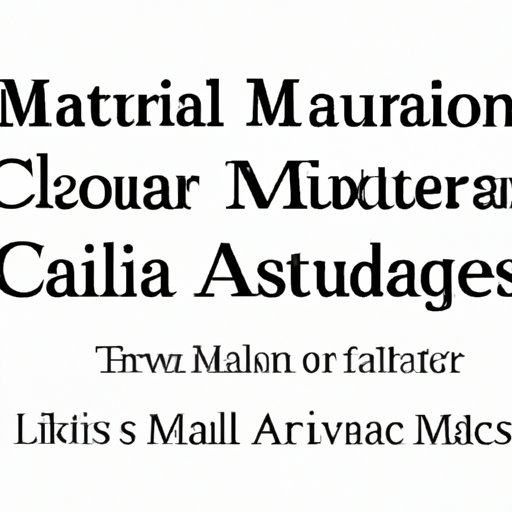
How to Cite Multiple Authors in MLA Style
Citing sources is an essential part of academic writing. By citing multiple authors, you give credit to the original creators of ideas and demonstrate your understanding of how different sources have contributed to your argument. As a widely used citation style, the Modern Language Association (MLA) provides guidelines for citing multiple authors in both in-text citations and the works-cited page. This article will guide you through the requirements of MLA citation style and provide tips to avoid common mistakes when citing multiple authors.
Why and When to Cite Multiple Authors
Intellectual property and ownership of ideas are at the core of academic writing. When building an argument, you may rely on different sources to support your claims. Citing these sources not only gives credit to the original authors but also establishes your credibility as a thoughtful researcher. Moreover, it allows readers to locate and further explore the sources you have used.
Multiple authors may be cited when a work has been created collaboratively or when a source has been edited, translated, or contributed to by several people. In these cases, citing all the authors gives proper attribution to those who have contributed to the final product. Moreover, it allows readers to distinguish the roles of each author, editor, or translator in the creation of the source.
How to Format Multiple Authors in In-Text Citations
In-text citations in MLA style require you to attribute the sources used in your text. When citing multiple authors in a single parenthetical reference, you need to include the last names of all authors separated by “and,” followed by the page number(s).
For example, if you are citing a work by three authors, your citation should look like this: (Smith, Johnson, and Lee 43). If the work has more than three authors, you can use et al. after the first author’s name. For example: (Brown et al. 87).
If you need to cite the authors’ names in the text, instead of in a parenthetical reference, you need to format them differently. For example: “According to Smith, Johnson, and Lee, academic integrity is crucial (43).”
How to Format Multiple Authors in the Bibliography or Works-Cited Page
The works-cited page is where you provide detailed information about all the sources cited in your text. In MLA style, works are listed in alphabetical order by the author’s last name. When citing a source with multiple authors, you need to list their names in the order in which they appear in the source.
If a source has two authors, you need to separate their last names with “and.” For example: Smith, John, and Jane Lee. If a source has more than two authors, separate the last name of the first author from the others with a comma, and then add “et al.” For example: Brown, Tom, et al.
If a source has both authors and editors, you need to distinguish their roles. List the author’s names first, followed by the source title, and then the editor’s names. For example: Smith, John, and Jane Lee. The Importance of Academic Integrity. Edited by Tom Brown, Oxford UP, 2018, pp. 11-29.
Examples of How to Cite Multiple Authors in Different Types of Sources
Different types of sources require different formatting when citing multiple authors. For example, when citing a book with multiple authors, you need to list all the authors’ names, the book title, and the publisher. For example: Smith, John, and Jane Lee. The Importance of Academic Integrity. Oxford UP, 2018.
When citing a journal article with multiple authors, you need to list each author’s name, the article title, the name of the journal, and the publication date. For example: Brown, Tom, et al. “The Effects of Online Learning on Student Performance.” Journal of Educational Psychology, vol. 110, no. 4, 2018, pp. 589-601.
When citing electronic sources with multiple authors, you need to include the author(s), the source title, the name of the website, the publication date, and the URL. For example: Smith, John, and Jane Lee. “Academic Integrity in the Digital Age.” The Conversation, 11 Mar. 2019, theconversation.com/academic-integrity-in-the-digital-age-100821.
Tips to Avoid Common Mistakes When Citing Multiple Authors
One common mistake when citing multiple authors is omitting an author’s name. Be sure to include all the authors’ names when citing a source. Another mistake is incorrectly abbreviating author names. Check the MLA Handbook or use an electronic citation tool to ensure you are using the correct abbreviations.
To avoid these mistakes, it is essential to carefully review the citation requirements for MLA style and double-check the author names and abbreviation format. Moreover, using a citation tool can save you time and ensure your citations meet the requirements of MLA style.
Conclusion
Citing multiple authors is an essential part of academic writing, demonstrating your understanding of the ideas and contributions from different sources. By following the guidelines of MLA citation style, you can provide proper attribution to the authors, editors, and translators who have contributed to the sources you have used. To avoid common mistakes, carefully review the citation requirements and double-check the author names and abbreviation format. Remember, correct citation not only gives credit to the original creators but also establishes the credibility of your argument.




